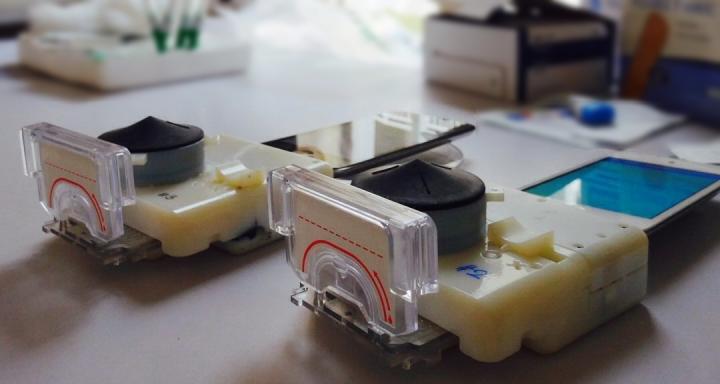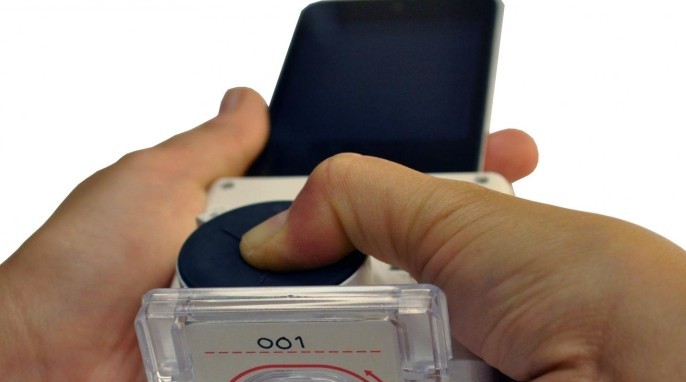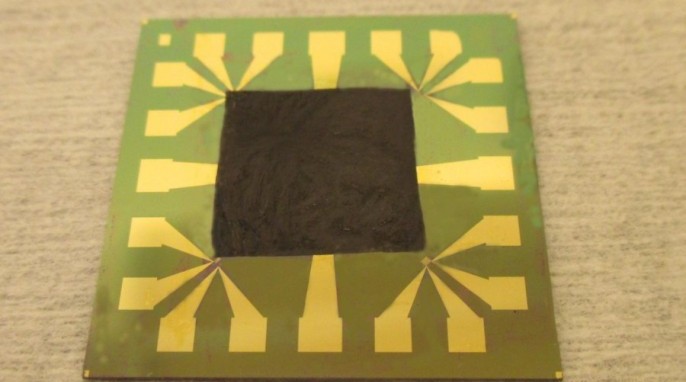Researchers at Columbia University have developed a low-cost smartphone accessory that tests for infectious diseases — HIV and syphilis — from a finger prick of blood in only 15 minutes. The device replicates all of the functions of a lab-based blood test. Furthermore, it does it all with power from any smartphone. With this little gadget, health workers around the world can quickly perform blood tests without sending vials of blood to a lab.

The 15-minute Blood Test
The prototype blood test attachment (or “dongle”) is designed to be small and light enough to fit in one hand, be easy to use, and to function in parts of the world that don’t have electricity 24/7. Importantly, it is also intended to be inexpensive. In fact, the device is predicted to have a manufacturing cost of only $34, compared to the $18,450 cost of other immunoassay (blood test) equipment.
“Our work shows that a full laboratory-quality immunoassay can be run on a smartphone accessory,” says Samuel K. Sia, associate professor of biomedical engineering at Columbia. “Coupling microfluidics with recent advances in consumer electronics can make certain lab-based diagnostics accessible to almost any population with access to smartphones. This kind of capability can transform how health care services are delivered around the world.”

The innovative digital tool was recently put to the test by health care workers in Rwanda. The health care workers were given 30 minutes of training with the new blood test device before testing the blood of 96 patients. Afterward, 97 percent of the patients said they would recommend the dongle because of its fast turn-around time, ability to offer results for multiple diseases, and the overall simplicity of the blood test process.
RELATED: HOW TO EXTEND YOUR MOBILE BATTERY LIFE
Sia is enthusiastic about the impact this device may have on global health care and disease detection. He says: “By increasing detection of syphilis infections, we might be able to reduce deaths by 10-fold. And for large-scale screening where the dongle’s high sensitivity with few false negatives is critical, we might be able to scale up HIV testing at the community level with immediate antiretroviral therapy that could nearly stop HIV transmissions and approach elimination of this devastating disease.”
“We are really excited about the next steps in bringing this product to the market in developing countries,” he continues. “And we are equally excited about exploring how this technology can benefit patients and consumers back home.”
Sia collaborated with researchers from Columbia’s Mailman School of Public Health; the Institute of HIV Disease Prevention and Control, Rwanda Biomedical Center; Department of Pathology and Cell Biology, Columbia University Medical Center; Centers for Disease Control and Prevention–Laboratory Reference and Research Branch, Atlanta; and OPKO Diagnostics. The work is published in the journal Science Translational Medicine.
The research was funded by a Saving Lives at Birth transition grant (USAID, Gates Foundation, Government of Norway, Grand Challenges Canada, and the World Bank) and the Wallace H. Coulter Foundation.
Top Image: A user presses the bulb of the smartphone attachment to initiate the fluid flow. (Tassaneewan Laksanasopin, Columbia Engineering)




